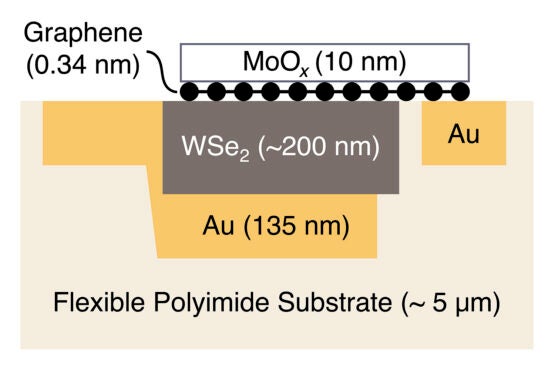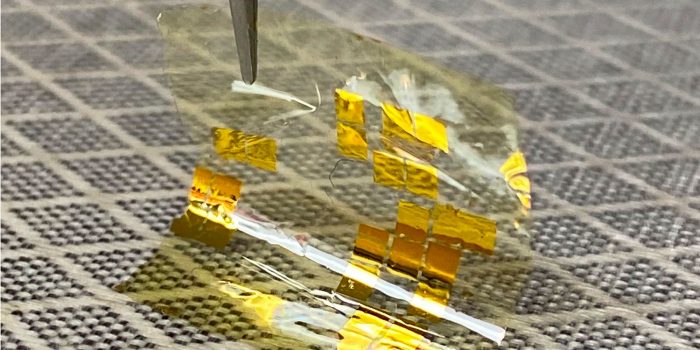According to a press release from Stanford University, researchers are developing an environmentally friendly new photovoltaic panel material that is fifteen times thinner than paper.
The supplies, which are made of transition steel dichalcogenides (TMDs), have the ability to absorb more light than other photovoltaic supplies while also being a far lighter alternative to silicon-based photovoltaic panels.
Press release adds that solar engineers are racing to produce solar panels that are virtually impenetrably thin and flexible. Engineers envision them being employed in a variety of mobile applications, including self-powered wearable devices and sensors, as well as lightweight airplanes and electric cars. In this context, Stanford University researchers have achieved record efficiencies in a promising class of solar materials.

The fact that these transition metal dichalcogenides – or TMDs – absorb ultrahigh quantities of sunlight compared to other solar materials is one of their main advantages.
The quest for new materials is important because silicon, the current king of solar materials, is far too heavy, bulky, and stiff for applications that require flexibility, lightweight, and high power, such as wearable gadgets and sensors, as well as aircraft and electric cars.
Koosha Nassiri Nazif, who works as a doctoral scholar in electrical engineering at Stanford and lead the study alongside, said “Imagine an autonomous drone that powers itself with a solar array atop its wing that is 15 times thinner than a piece of paper,”.

The paper has been published in the Dec. 9 edition of Nature Communications.
Koosha further maintained that today, silicon accounts for 95% of the solar business and we require new materials that are light, bendable, and, more importantly, environmentally friendly.
While TMDs offer a lot of potential, research so far hasn’t been able to convert more than 2% of the sunlight they absorb into electricity. That percentage is approaching 30% for silicon solar panels. TMDs will have to bridge that gap if they are to be generally used. The new Stanford prototype achieves 5.1 percent power conversion efficiency, but the scientists believe that with optical and electrical improvements, they may attain 27 percent efficiency.
The most significant advantage of TMD solar cells is their amazing thinness, which not only reduces material usage and costs but also makes them lightweight and flexible, allowing them to be moulded into irregular shapes such as a vehicle roof, an aeroplane wing, or the human body. The Stanford researchers were able to create an active array with a thickness of only a few hundred nanometers. The array includes photovoltaic TMD tungsten diselenide and gold contacts bridged by a single atom thick layer of conducting graphene. All of this is held together by a flexible, skin-like polymer and an anti-reflective coating that increases light absorption.
TMD cells are less than six microns thick when fully formed, around the thickness of a light office garbage bag. To achieve the thickness of a single sheet of paper, 15 layers would be required.


